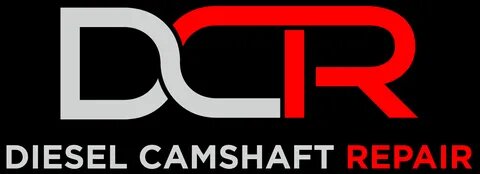Camshaft Dynamics involves studying how diesel engine camshafts behave when subjected to different loads and speeds. This includes analyzing vibrations, torsional stress, and resonance to prevent early wear and tear and enhance performance.
By understanding these dynamics, engineers can design camshafts that withstand various operating conditions, ensuring durability and reliability. Additionally, optimizing camshaft dynamics can lead to smoother engine operation and improved fuel efficiency, contributing to better overall performance
Vibration Analysis
Camshaft dynamics research explores how vibrations affect camshaft performance. Too much vibration can damage important parts like bearings and lobes, making the engine less reliable and shortening its life.
Researchers study camshaft dynamics to find ways to reduce these risks, so engines run smoothly and last longer without problems. This research also helps improve how camshafts are designed and made, leading to stronger and longer-lasting camshaft systems for different uses.
Torsional Stress Analysis
Engineers carefully study how the camshaft handles twisting stress, especially when the engine speeds up or slows down. Understanding these stresses helps them pick the right materials and shapes for the camshaft, so it can handle heavy loads without bending or breaking.
This analysis is crucial for making sure the camshaft works well in different situations. Engineers use advanced computer simulations and tests to make the camshaft perform better and last longer, which is important for the engine to work efficiently and stay strong over time.
Their work helps make engines more reliable, needing less maintenance, and ultimately makes vehicles perform better and last longer on the road.
Resonance Mitigation
When the camshaft’s frequency matches the engine’s, it causes strong vibrations that could harm the camshaft over time. Researchers work hard to stop this by changing the design or adding damping devices.
They want to reduce these vibrations to protect the camshaft and keep the engine working smoothly. By studying and testing, they try to make the camshaft work well in different situations, lowering the chance of resonance problems.
This helps make the engine more reliable and lasting, ensuring it works consistently even under different conditions. Engineers’ proactive efforts strengthen the engine’s durability, making sure it performs well under different loads and conditions.
Preventing Premature Wear
Engineers carefully study camshaft dynamics to find where stress and wear might happen. They then strengthen those areas or improve lubrication to prevent damage before it starts. This proactive approach helps the camshaft last longer and saves money by reducing the need for frequent repairs.
By being proactive, engineers avoid problems before they occur, ensuring the camshaft works reliably for a long time. This attention to detail not only helps the engine run better but also saves money and keeps customers happy by avoiding breakdowns and repairs.
Enhancing Performance
Engineers boost the engine’s performance and durability by optimizing camshaft dynamics. They do this by reducing friction and cutting energy losses from vibrations. This makes the engine run smoother and more efficiently, producing more power while using less fuel.
By fine-tuning the camshaft, engineers aim to make the engine work better, which means improved fuel economy and fewer emissions. This process results in a better driving experience and helps the environment by reducing fuel consumption and emissions.
Overall, enhancing camshaft dynamics is vital for improving the engine’s performance and sustainability.
Durability and Reliability
Studying camshaft dynamics is crucial for diesel engines’ durability in different uses, like in cars and machinery. Engineers work hard to make camshafts that can handle daily use without wearing out too quickly.
They study how camshafts work with other engine parts and the stress they face during operation. This understanding helps engineers create camshafts that last a long time, keeping engines running smoothly and reliably.
This careful design process is important for diesel engines to work well in many situations, making them more efficient and needing fewer repairs. Overall, research on camshaft dynamics greatly improves diesel engines’ durability and performance, meeting the needs of different industries.
Design Optimization
Studying camshaft dynamics helps engineers design better camshafts. They refine profiles, select materials, and use manufacturing methods to make camshafts that balance performance and durability. Engineers test and adjust the design repeatedly to meet high standards for performance and reliability.
The aim is to create camshafts that exceed expectations and last a long time in different conditions. This careful process ensures that camshafts work reliably for various uses.
In-depth research into camshaft dynamics is crucial for ensuring diesel engines’ reliability and durability in various applications. Engineers carefully study aspects like vibration, torsional stress, and resonance to improve engine performance and prevent potential issues.
By tackling problems like premature wear and optimizing design, materials, and manufacturing methods, engineers create camshafts that can endure daily use while performing well and saving fuel. This comprehensive approach not only makes camshafts last longer but also reduces maintenance costs and improves overall engine durability.

